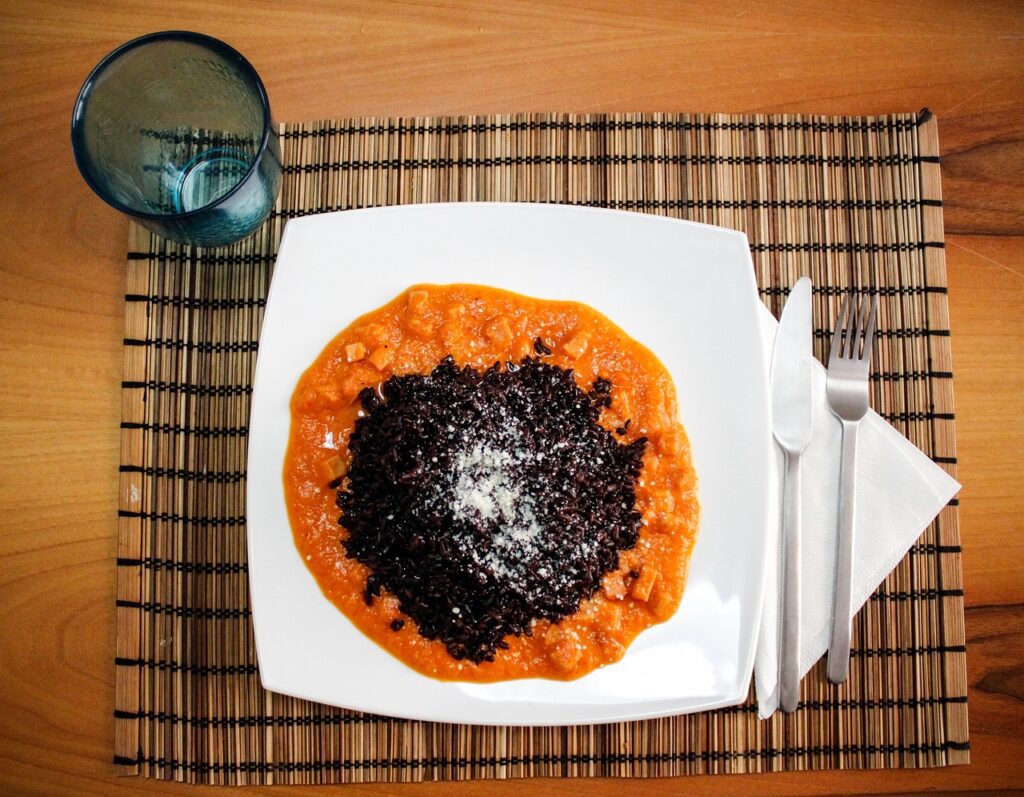In the culinary world, the squid ink has long been appreciated for its ability to add a distinctive colour to exquisite dishes, such as black rice or baby squid in its own ink. However, its value goes far beyond the aesthetics of food. This natural ink hides nutritional and scientific secrets that make it an exceptional ingredient. In this article, we will explore the properties We'll find out why you should consider incorporating it into your kitchen.
Special features of squid ink
Have you ever stopped to think about how many foods are naturally black in colour? Surprisingly, they are quite rare. Although there are a few exceptions, such as certain varieties of olives and blackberries, most foods that are naturally black in colour have a black colour. black colour you probably know often resort to artificial colouring to get that dark shade.
However, is it only a visual issue, or is it a question of the squid ink Does it have beneficial effects on our body? Definitely yes! This dye increases the nutritional content of food and improves its taste. Here we tell you more about it.

Proven benefits
In a study published in 2020 by a group of dermatologists in China, it was shown that the polysaccharides from the squid ink reduced oxidative cell damage in connective tissue. It is worth mentioning that this is one of the most common causes of skin ageing. Therefore, including squid ink in our diets could help to staying youngeres. Another study also showed that this type of polysaccharide serves to improve the gastrointestinal microbiome.
On the other hand, scientists have found that this ink has a high antioxidant content. In this way, it contributes to the prevention of cancer and heart disease.
Since 2008, squid ink has even been studied for its ability to raise the values of iron in those suffering from anaemia.
What is the taste of squid ink?
The squid ink has a salty taste that conveys the freshness of a fish just caught in the ocean. This makes it an excellent choice for reduce the amount of salt on your plates.
It also has high levels of glutamic acidThe acid is the component responsible for the intensity of its flavour. At the same time, this acid helps to enhance the flavour of dishes, which is why it is so valuable in gastronomy.

How is it obtained?
When squid sense a threat, they release this dye to make it easier to escape. In the ocean, this creates a black stain that surrounds them, keeping them hidden.
The reason for the black colouring of this ink is the high quantity of melanin it contains. This is the same compound that is found in our eyes, skin and hair, giving us colour. For this reason, when we tan in sunlight, we stimulate melanin, which gives us a tanned tone.
In addition, squid ink also has other components that give it a denser and more valuable consistency. nutritional benefits. In short, it is a solution of amino acids, enzymes and glutamic acid.
Nutritional value of squid meat
It is important to mention that not only squid ink has a high nutritional value, but also squid meat. It is a low-calorie option. In fact, 100 grams of squid provide only 80 kcal. Moreover, it is a food rich in protein and healthy fats such as omega 3.
In short, we hope that this article has inspired you to consider the squid ink As a valuable ingredient in your kitchen and an ally for your health, are you ready to enjoy its benefits? Click on this link to discover how to prepare tasty squid in its ink. Bon appétit!







